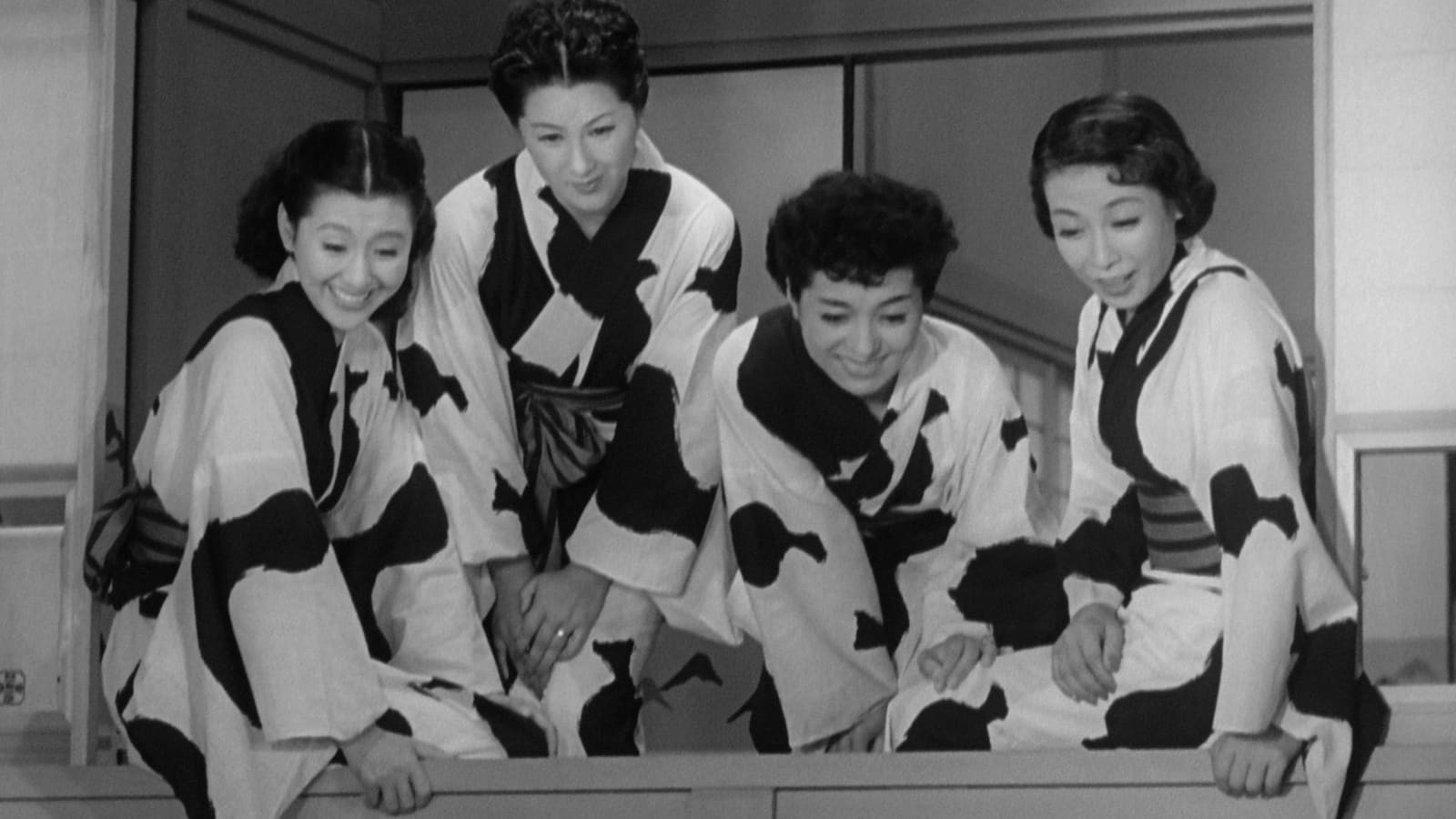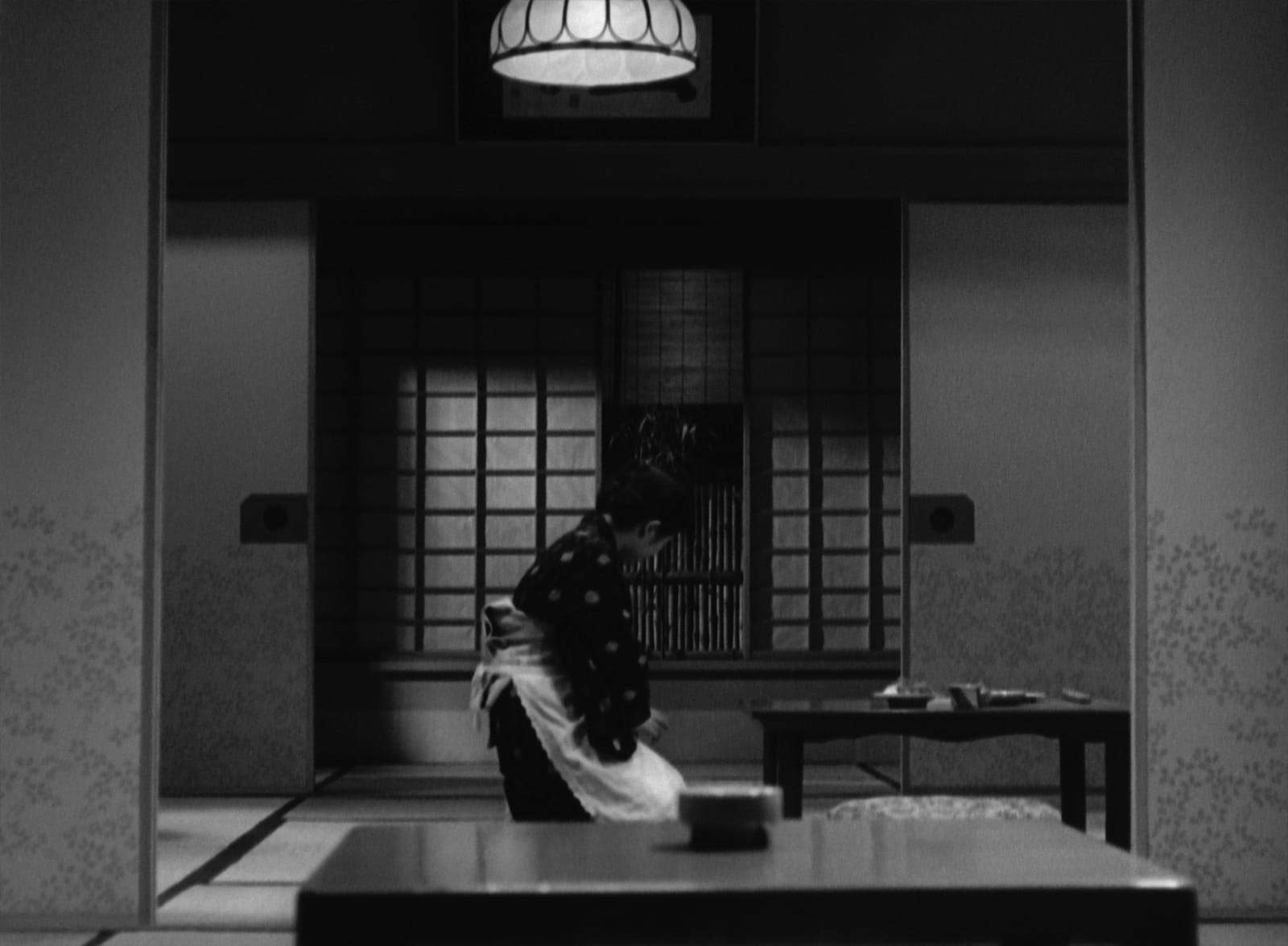RELATED ARTICLE
The Flavor of Green Tea over Rice: Acquired Tastes
Share

In 1933, Japan withdrew from the League of Nations, after being censured for its invasion of Manchuria. Despite this, the majority of Japanese people remained avid consumers of American movies and Western fashion, which exasperated the militarists in power. A 1933 propaganda film shows a “modern girl” and a “modern boy” strolling in Tokyo, with a voice-over from General Sadao Araki castigating “these traitors [who] obsequiously ape Westerners,” and warning that their frivolity could give the erroneous impression that “the Japanese can be easily swayed under external pressures.”
A modern boy himself, director Yasujiro Ozu may have felt irked by General Araki’s antimodern gambit. Shochiku studios, Ozu’s creative home throughout his career, had been instrumental since the early thirties in popularizing American jazz, dance halls, fast cars, and Hollywood glamour. Ozu himself had demonstrated his proficiency with American-style gangster pictures in Walk Cheerfully (1930) and Dragnet Girl (1933). In 1937, he made What Did the Lady Forget?, a sort of comedy of remarriage that anticipates the director’s better-known postwar social satires and seems to taunt Araki’s jingoistic rhetoric by parading the cultural hybridity of contemporary Japanese life. The story revolves around a middle-aged Tokyo couple whose strained relationship is rejuvenated by their vivacious niece. Heedless of her disciplinarian aunt, Setsuko (Michiko Kuwano) smokes tobacco, drinks whiskey, and comes home late at night. But this modern girl turns out to still value at least some of the old ways, as she sides with the henpecked husband Komiya (Tatsuo Saito) when his pompous, kimono-clad wife, Tokiko (Sumiko Kurishima), flouts his patriarchal authority. Cast as the daughter of a well-off family from Osaka, the beauty Kuwano speaks in a Kansai dialect that would have connoted the vitality of the mercantile class to Japanese audiences of the time, giving the character an unusual multidimensionality. Supported by Kuwano’s outstanding comic performance, Ozu fractures Araki’s characterization of modern girls as ugly, egotistical, and masculinized.
A few months after the release of What Did the Lady Forget?, Ozu was conscripted into the Imperial Japanese Army for two years of military service in China. In the summer of 1939, he was discharged, and on his return to Tokyo, he and screenwriter Tadao Ikeda, who had been frequent collaborators since the late twenties, began to work on a new script. In a January 1940 interview, the filmmaker said the upcoming project would be a comedy (kigeki) and announced its basic plot and themes:
Three housewives of the leisure class kill their boredom by visiting kabuki plays and hot springs. One of their husbands is embarrassingly uncouth, heedless of his appearance and public reputation; for example, he would pour miso soup over rice at dinner, smoke a cheap cigarette, and ride trains in economy class. Humor erupts each time his rustic behavior is shown to irritate his pompous, Tokyo-bred wife. When the disreputable husband receives his call-up notice, his wife loses her composure; the husband, by contrast, is shown taking a nap on the day before his departure. His self-composure makes her reevaluate his manliness. At midnight on that day, they apologize to each other and savor a humble meal of green tea over rice.
This simple story of conjugal life did not make it to production during World War II, because, the story goes, the Home Ministry insisted that a departure for the battlefield should be a joyful occasion, celebrated with festive red-bean rice rather than humble green tea over rice. Ozu shelved the project in protest.








